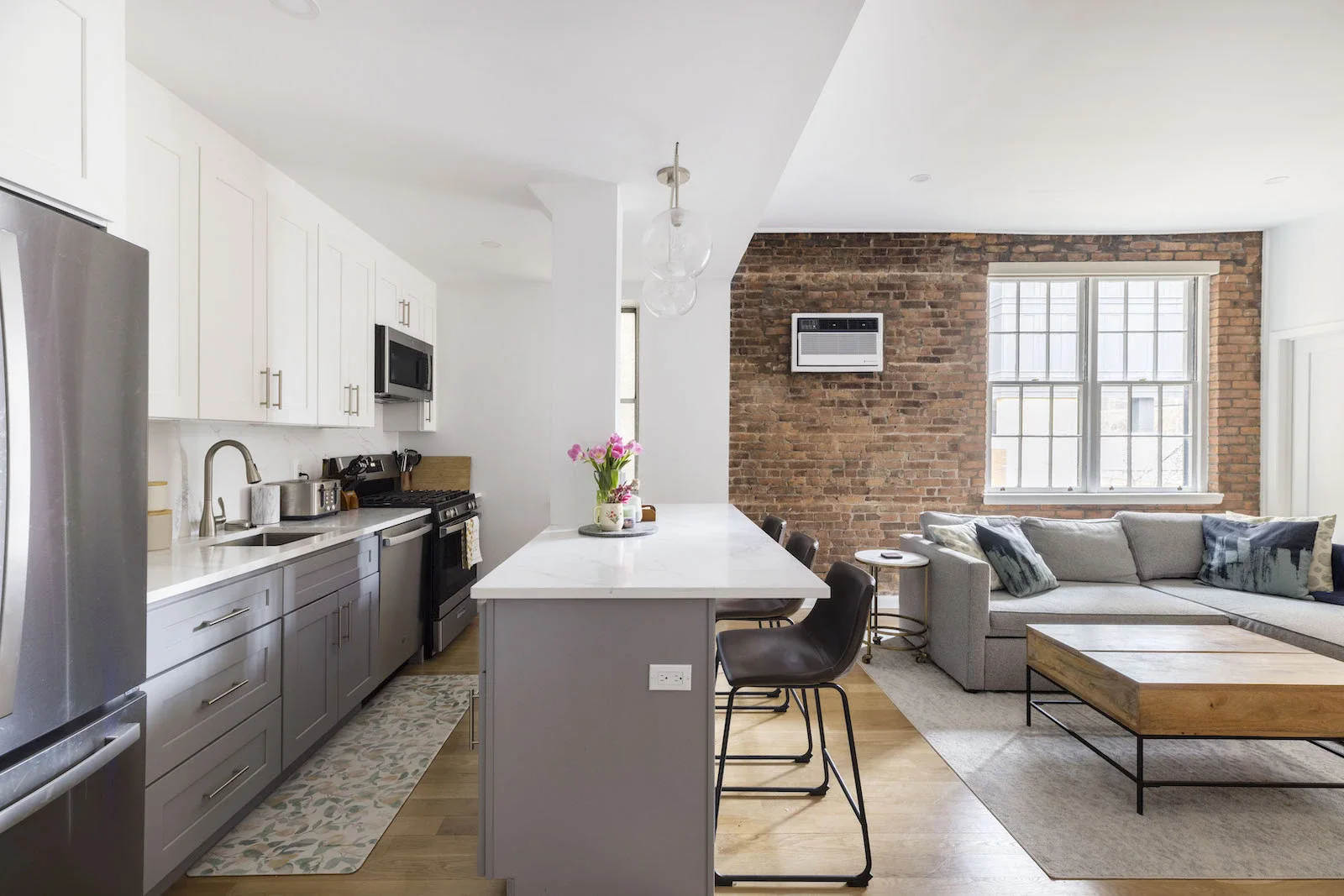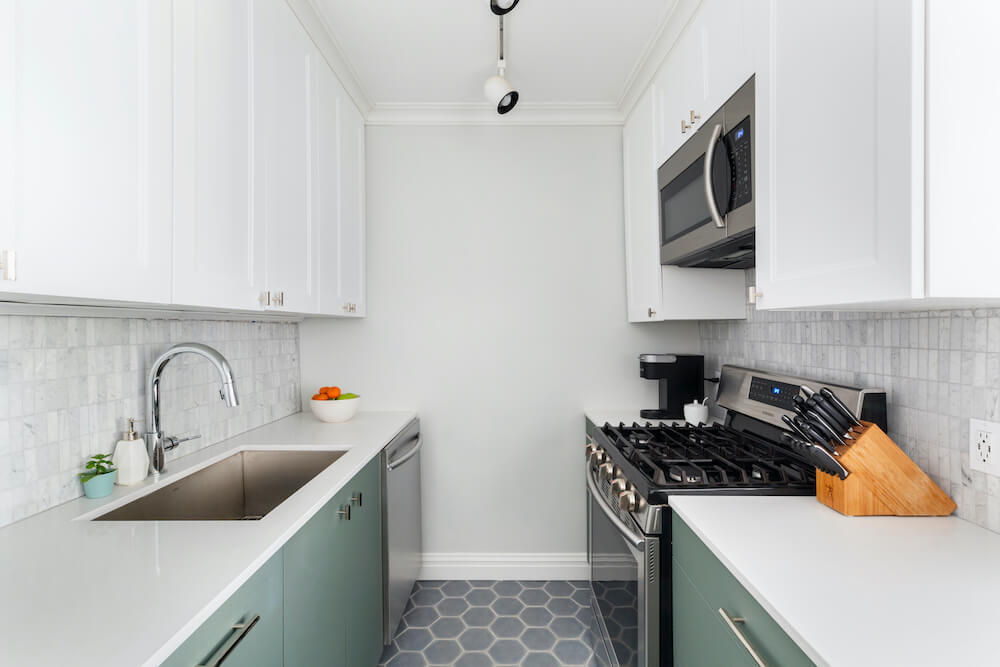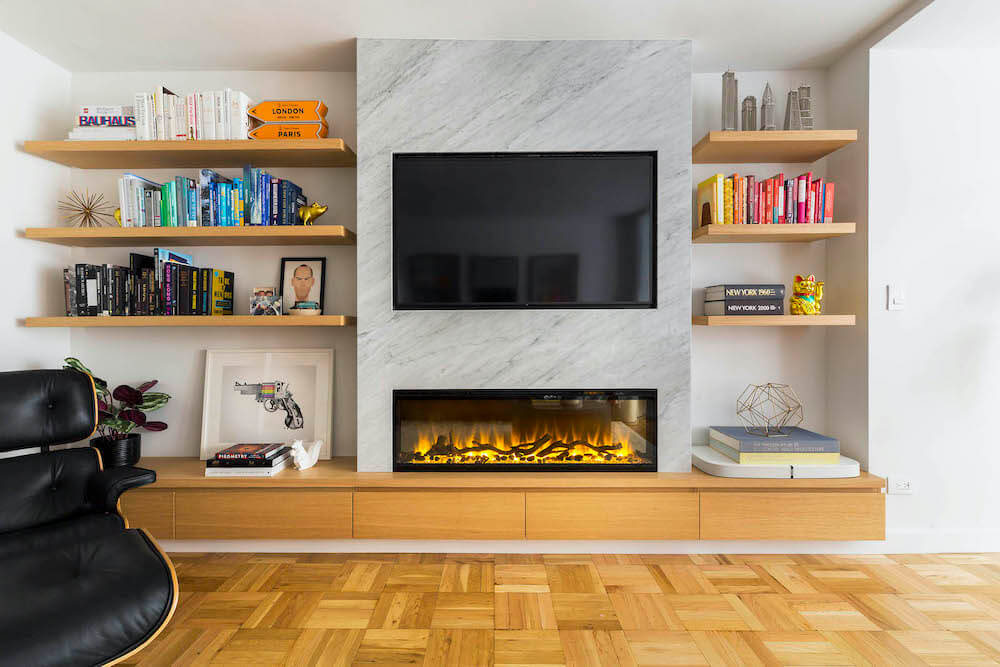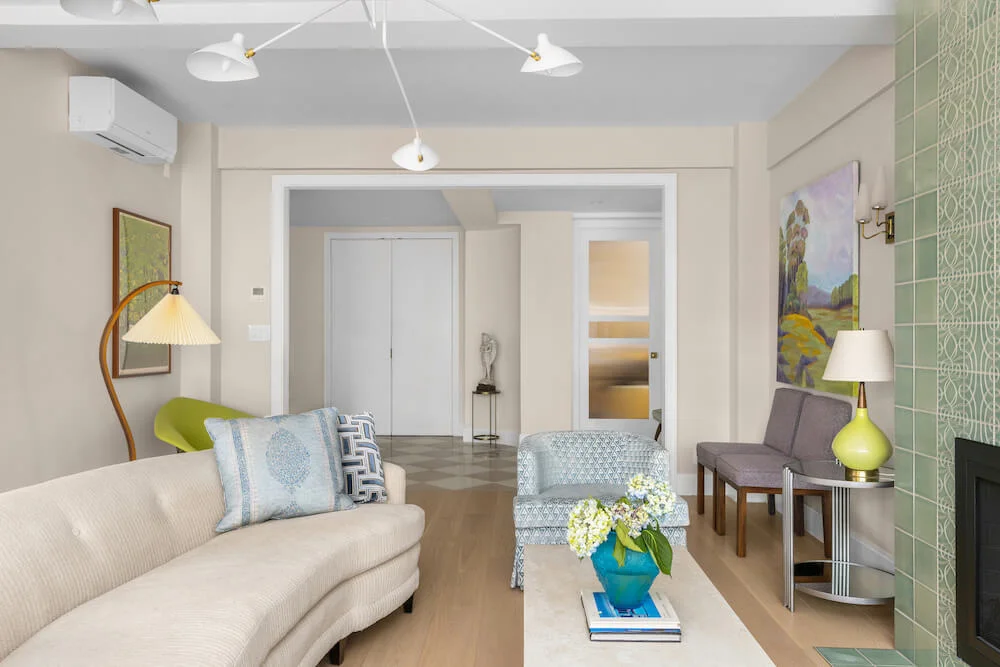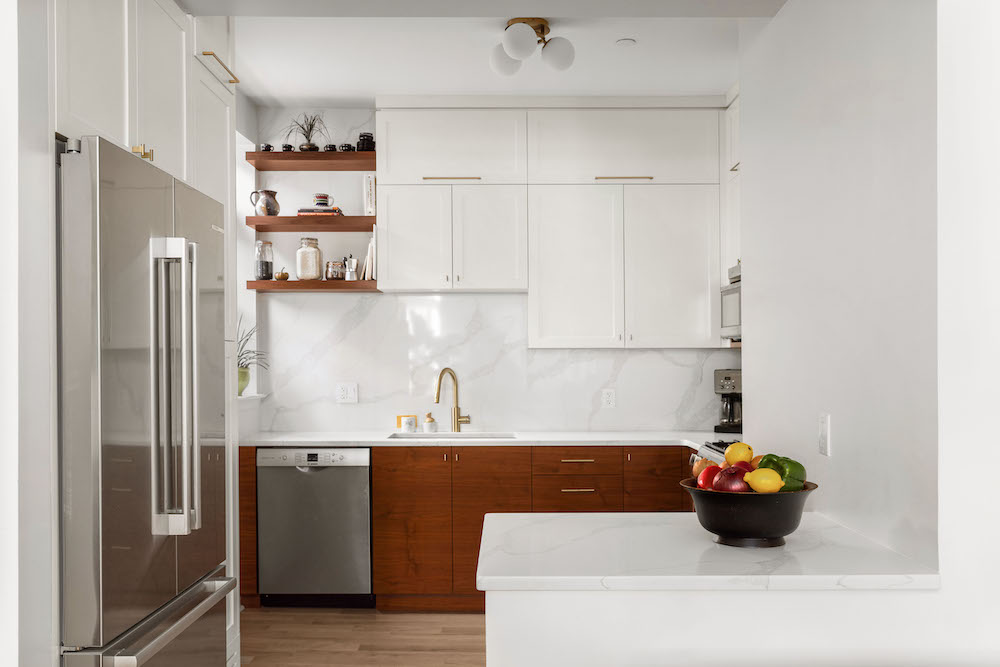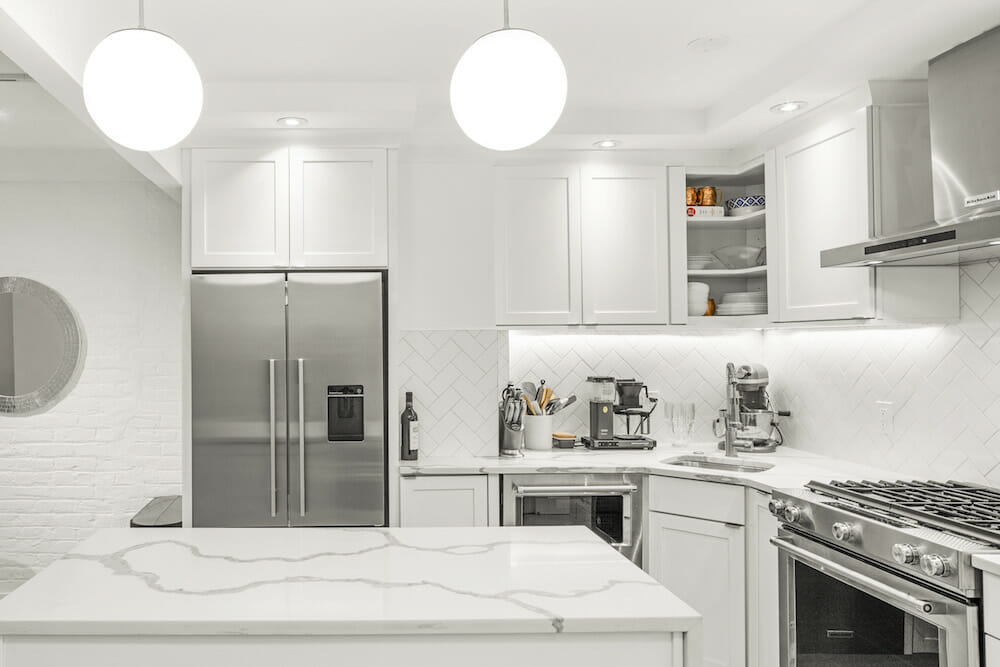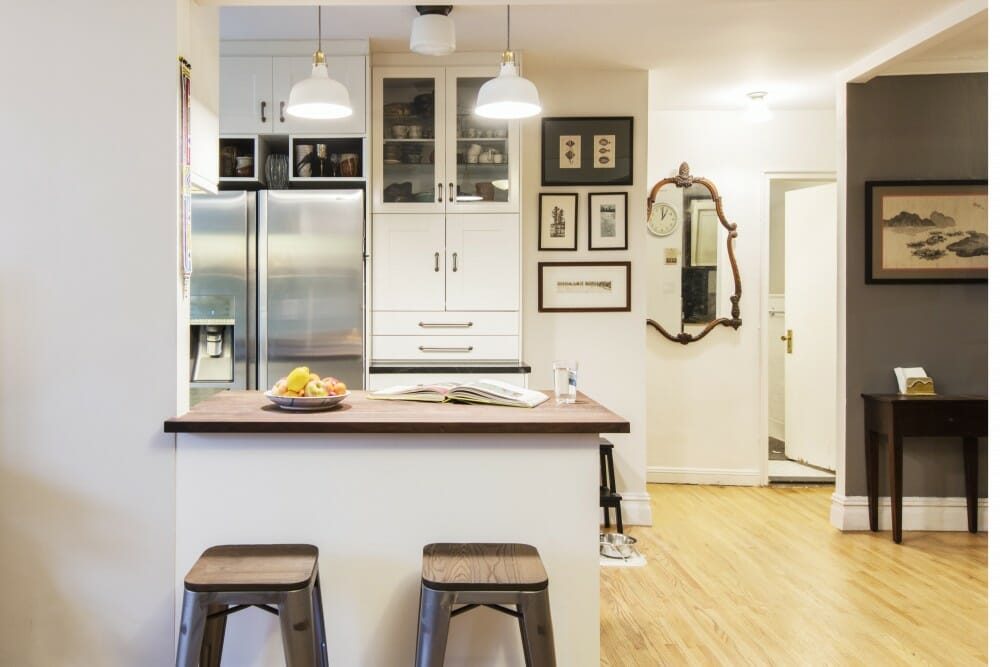Commercial Guide: A Breakdown of a Commercial Lease, Part 1
Laying out the basic—but integral—elements of a commercial lease
Fool’s Gold renovation by this Sweeten general contractor
For a business owner, once a business plan and financing are ready, and a space for your office, restaurant, or retail space has been identified, the next crucial step is understanding the commercial lease itself. Having the right team—a commercial real estate broker and an attorney—who specializes in negotiating leases for commercial spaces will help advise what should be included in the lease document to protect you and your business.
Here, Sweeten, a free service matching business owners with vetted general contractors, consulted the experts to define these elements.
Typically, a landlord provides the first version of the lease, which will (obviously) favor the landlord and is often derived from a template. Oftentimes, the landlord will use a template. Commercial real estate broker with Compass, Alex Cohen, explains, “The commercial real estate advisor negotiates all the key business terms on behalf of a tenant before a lease is prepared or an attorney is engaged by the tenant. Once a lease is drawn, the advisor can confirm all of the agreed business terms are accurately conveyed in the lease and can assist the attorney in the negotiation of legal terms.” While the lease should include everything previously discussed in the term sheet, your attorney should perform a close review, checking that you are clear on the terms and making any necessary adjustments so that the lease is more favorable to you.
Something to keep in mind: There are important differences between residential and commercial agreements. If you are familiar with residential leasing, you may make (incorrect) assumptions about commercial leases based on that experience. One major difference is that residential renters have rights under the law—to heating and repairs, for example. In a commercial tenancy situation, the landlord does not have to provide heat or make repairs unless it is stipulated in the lease. Read on for the specifics of what is typically included in a commercial lease.
Base rent, steps, and escalations
The rental amount on a commercial lease is calculated via several variables. You are responsible for a base rent, which is the minimum amount of rent you pay. This is often calculated on a yearly basis and based on the rent per rentable square foot, a term explained below.
For office tenants in New York, the square footage for which a business pays rent can be 30% to 40% greater than the square footage on which carpet can be laid and furniture installed. Rentable square feet for office space is usable area, plus a portion of the common areas adjusted by a market loss factor. A retail space, however, is generally marketed and leased on a usable square foot (the actual square footage of space that is available to the tenant for its business use) basis. Loss factors are higher for partial-floor office spaces than for full-floor occupancies, because common areas like corridors, elevators, and lobbies are apportioned on divided floors into each tenant’s square footages. This means full floors are usually more efficient and cost-effective than partial-floor occupancies.
In addition to fixed increases in the base rent—typically every five years and referred to as “rent steps”— various mechanisms (“escalations”) exist that adjust the rent to be paid by the tenant during the term of the lease. Landlords want to ensure that they will continue to generate profit and will want the tenant to bear at least part of the responsibility for increased operating costs and higher taxes.
Additional rent for utility charges and services
In New York City, base rent does not usually include electricity service. Utilities are usually charged by submetering, or through rent inclusion (though if you are fortunate, your space will have a separate meter and you pay the actual cost of electric usage directly to Con Edison). If your commercial space is not individually metered, you will have to buy electricity from the landlord, who usually marks it up. In submetering, you will pay a monthly electric charge (plus markup) to your landlord. With rent inclusion, the landlord includes a fixed charge for electricity lumped onto the rent, calculated per rentable square foot. This is a prime area for negotiation.
Other utilities such as water, gas, and heat, may be included in the rent or sub-metered. Typically this is decided based on building configuration and usage—if it is low, the landlord is usually happy to include it in the rent. Sweeten brings homeowners an exceptional renovation experience by personally matching trusted general contractors to your project, while offering expert guidance and support—at no cost to you. Renovate to live, Sweeten to thrive!
Also note that if the utilities are shared in the building, the landlord is only responsible for providing the utilities in the hours stated in the lease. For example, if you need to use the heat after hours, you may have to negotiate that separately and pay additional after-hours charges.
Another area of consideration is cleaning services for your rented space. There are typically three options: 1) landlord includes the service as part of the rent; 2) landlord has a preferred vendor who you pay out-of-pocket; or 3) you obtain cleaning services on your own (or clean the space yourself!).
Terms of the lease
In commercial real estate, a “short-term” lease is considered anything under five years, whereas a “long-term lease” is anything longer than five years and often for a 10-plus year period. You will decide what kind of lease works for your business based on how stable it is, and how long you think the location will work for your business.
In tandem with the length of the lease, also pay close attention to the assignment and subletting rights. If you need the flexibility to assign or sublet your space, in case you need to move your business or unexpectedly close it, then you want to make sure the process is not unnecessarily onerous. Every lease requires the landlord’s consent to sublease unless you are renting desk space to another firm and this is permitted in the lease.
Lease concessions
It is common for leases to include a rent-free period and a tenant improvement allowance (TIA) for use during the contractor build-out of the interior, particularly if the landlord is providing a raw space. Alternatively, the landlord might choose to renovate on behalf of a tenant, subject to their requirements; rent typically commences when the tenant assumes occupancy of the finished space. During times when the market favors tenants, landlords are often willing to provide funding for the build-out. The dollar amount is usually calculated based on the rentable square footage.
Most of the time, landlords are more willing to grant concessions when it is a long-term lease, because they are guaranteed income for a longer length of time.
As with base rents, the market generally dictates lease concessions. But depending on the condition of the space and a tenant’s requirements and credit, these concessions can differ significantly on properties that have similar base rents. It’s important that your real estate broker understands your preferences so that many of these issues can be discussed upfront at or prior to the term-sheet stage and finalized by your attorney in the lease.
Renewal options
There are no automatic lease renewals in commercial real estate. Once your lease expires, there are also no caps on what the landlord can ask for the new rent. Of course, market conditions will influence how strong a position you are in to negotiate. One way to pre-empt this issue is to negotiate for an “option to renew” in your initial lease. Discuss and decide whether this will be a fixed increase or a “fair-market” rent increase, which is calculated by looking at comparable properties and transactions in the neighborhood and may be subject to arbitration.
Permitted use
Make sure that your intended use of the property is permitted by the Certificate of Occupancy (issued by the Department of Buildings) as well as by zoning regulations. The lease needs to state clearly what the permitted uses are.
Security deposit and guarantees
Landlords want a reliable tenant. They attempt to ensure this in a number of ways, including via security deposits and guarantees.
If you are deemed somewhat risky, this will be reflected in the amount of security deposit the landlord will require upfront. Security deposits in many cases must be in the form of a letter of credit from your bank, and typically the first month’s rent is due at lease execution, even if there is a free rent period at the beginning of the lease. A corporate guarantee from a parent company that owns the corporate entity signing the lease and/or a “good guy” guaranty provided by a principal of the firm may also be required.
Look for Part 2 of Sweeten’s post on this subject, coming soon, in which commercial real estate broker Alex Cohen focuses on often overlooked points in the commercial lease to help business owners make the best decisions.
—
Sweeten handpicks the best general contractors to match each project’s location, budget, and scope, helping until project completion. Follow the blog for renovation ideas and inspiration and when you’re ready to renovate, start your renovation on Sweeten.

